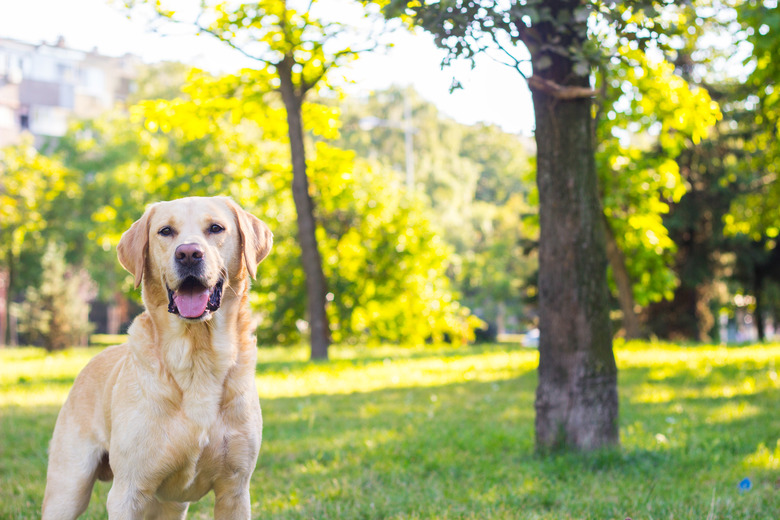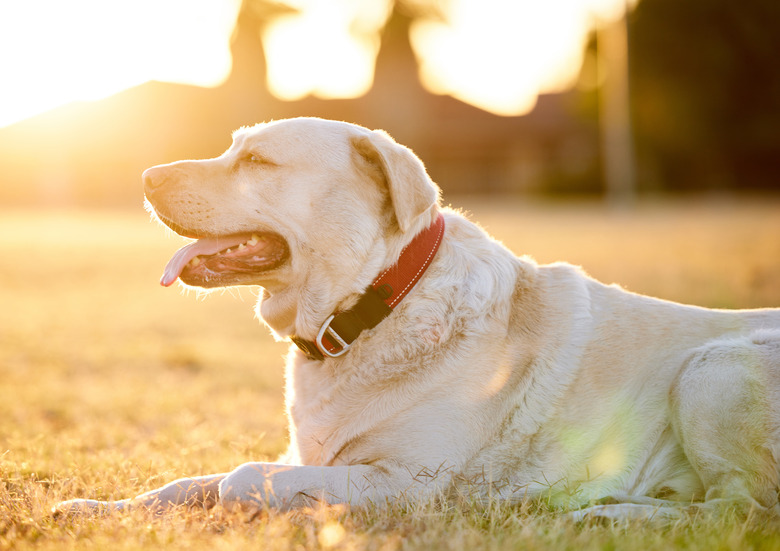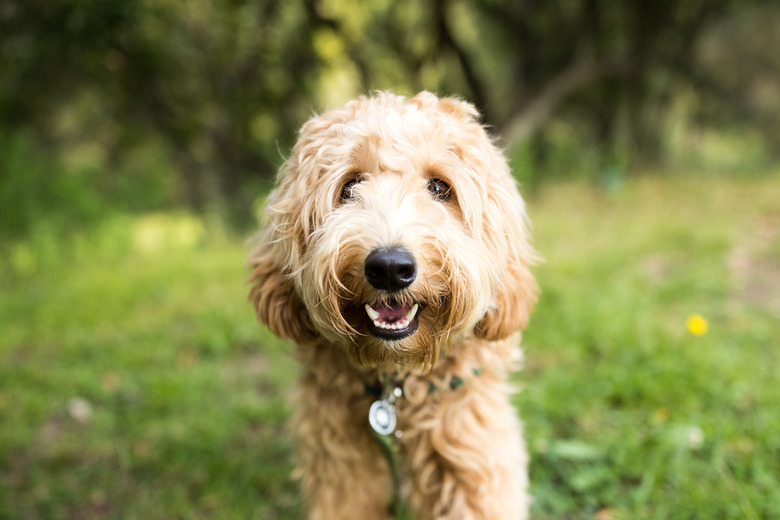Why Does My Lab Have Wavy Hair?
Labrador retrievers might be the most popular dog breed in the United States, but they don't have many types of looks. Labs are typically solid black, yellow, or chocolate with only a minuscule amount of white and distinctly straight hair. Labrador retrievers make a good family pet because they are characteristically very affectionate, great with children, and good with other dogs. They do shed a lot, but require minimal grooming except for regular brushing and bathing.
Labs are closely related to Newfoundlands, which sometimes have wavy fur because the curly-coated retriever is a distant relative. If you have a curly Labrador, he could be a genetic anomaly, a mixed breed, or another breed altogether such as the curly-coated retriever, whose confirmation is similar to a Lab.
Wavy fur and breed standard
Wavy fur and breed standard
Some breeders sell pet-quality Labrador retrievers who don't meet the American Kennel Club's breed standard for the show ring. Although a slight amount of wavy fur in the coat along the back is permissible, a wavy coat is severely penalized in the show ring — so it's not desirable in a show dog. The more wavy hair, the more likely these pure-bred dogs will be sold as pets.
Many breeders sell puppies with limited registration and a mandatory spay-neuter contract. However, some pet-quality dogs aren't neutered or spayed before they produce offspring. If you're sure your wavy-haired dog is 100 percent Labrador, he might be a descendant of pet-quality ancestors.
The take-away is that it's possible for pure-bred Labradors to have some wavy fur, but a lot is unusual. It's more likely a curly-haired Lab is either a mixed breed or a curly-coated retriever.
A curly Labrador vs curly-coated retriever
A curly Labrador vs curly-coated retriever
A curly-coated retriever is built very much like a Labrador retriever except for a super-wavy coat. According to the AKC, curly-coated retrievers are a different breed than Labrador retrievers and are easily confused with curly-haired Labs. A curly-coated retriever is black or brown with waves that run from the base of the skull to the tip of the tail.
The face and lower legs are smooth and short-haired. His ears have curls or waves that are typically looser than those on his body. But a giveaway that you have a curly-coated retriever is a tapered wedge-shaped head, characteristic of the breed.
Similar to Labs, curly-coated retrievers are affectionate and good family pets, but might be slightly less tolerant of other dogs. However, their tight curls require less grooming. Because they were originally bred to be working hunting dogs, they're usually strong swimmers and the short curly hair is waterproof and thorn-resistant.
Mixed curly hair Lab
Mixed curly hair Lab
Considering many Labrador retriever mixed dogs are very popular, a curly-haired Lab might have mixed genetics. A Lab mix is usually a hybrid dog created by intentionally breeding a purebred Labrador retriever with another breed. Currently, there are an estimated 50 Lab crosses, including the boxador, a boxer/Labrador mix; the goldador, golden retriever/Lab mix; and the very popular labradoodle, a poodle/Lab mix. Clearly, the labradoodle will likely end up with curly or wavy fur, and less shedding is a benefit of that hybrid.
All mixes will take on unique characteristics, enhancing or modifying traditional Labrador retriever disposition and conformation. For instance, a labradoodle is usually great with kids, but a boxador is recommended for adults only. No surprise, an Aussie/Lab cross (called an Aussiedor) and a border collie/Lab cross (called a borador) are recommended for active families. Of course, if it's a curly hair Lab you desire, crossing a Labrador with a curly-coated retriever is an almost sure bet.


